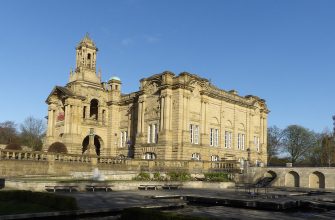Located in the heart of London, the Brunel Museum is a testament to the city’s rich history and the engineering marvels of the 19th century. The museum is dedicated to the life and works of Isambard Kingdom Brunel, one of Britain’s most influential engineers. It is housed in the engine house of the Thames Tunnel, the world’s first underwater tunnel, which is itself a significant engineering achievement. The Brunel Museum offers a fascinating insight into London’s industrial past and the innovative spirit that shaped it.
The History of the Brunel Museum
The Brunel Museum is located in the historic engine house of the Thames Tunnel, which was designed by Sir Marc Isambard Brunel and his son, Isambard Kingdom Brunel. The tunnel was opened in 1843 and was hailed as the eighth wonder of the world. It was the first tunnel to be constructed under a navigable river and was a significant engineering achievement of its time.
The museum was established in 1961 to preserve the legacy of the Brunels and their contribution to engineering. It showcases a collection of artifacts, documents, and models related to their works, including the Thames Tunnel, the Great Western Railway, and the SS Great Britain.
What to See at the Brunel Museum
The Brunel Museum offers a range of exhibits and attractions for visitors to explore:
- The Thames Tunnel: Visitors can explore the historic Thames Tunnel, which is now part of the London Overground network.
- The Engine House: The museum is housed in the original engine house of the Thames Tunnel, which contains a variety of exhibits related to the tunnel’s construction and operation.
- The Brunel Collection: The museum’s collection includes a range of artifacts, documents, and models related to the works of Sir Marc and Isambard Kingdom Brunel.
- The Rooftop Garden: The museum also features a rooftop garden, which offers panoramic views of the London skyline.
Visiting the Brunel Museum
The Brunel Museum is open to the public seven days a week, and admission charges apply. Guided tours of the Thames Tunnel are also available, which offer a unique opportunity to explore this historic engineering marvel.
Tips for Tourists
Here are some tips for tourists planning to visit the Brunel Museum:
- Check the museum’s website for the latest information on opening times and admission charges.
- Book your tickets in advance to avoid queues, especially during peak times.
- Don’t forget to visit the rooftop garden for stunning views of the London skyline.
- Take advantage of the guided tours to learn more about the history and significance of the Thames Tunnel.
Practical Information
The Brunel Museum is easily accessible by public transport, with Rotherhithe and Canada Water stations nearby. There are also several bus routes that stop near the museum. There is no parking available at the museum, so visitors are advised to use public transport. The museum is wheelchair accessible, and there are accessible toilets available on site.
In conclusion, the Brunel Museum is a must-visit for anyone interested in London history, engineering, and the life and works of Isambard Kingdom Brunel. It offers a unique insight into the city’s industrial past and the innovative spirit that shaped it.








